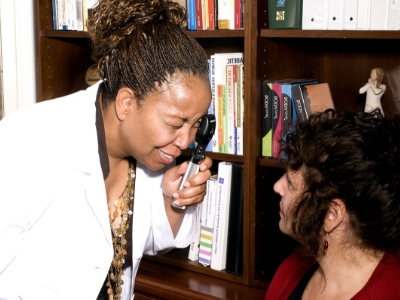Eye Cataract Treatment

Treatment for Eye cataracts may include cataract surgery if you have impaired vision that interferes with your usual activities. The surgery is generally safe and effective.
A cataract is a clouding of the lens of your eye. For people with cataracts, seeing through cloudy lenses is a bit like looking through a frosty or fogged-up window. Clouded vision caused by cataracts can make it more difficult to drive a car, read, or see the expression on a friend’s face. Most cataracts develop slowly and don’t disturb your eyesight early on. But with time, cataracts will eventually interfere with your vision.
Signs and Symptoms of Eye Cataract
- Fading or yellowing of colors
- Double vision in a single eye
- Seeing halos around lights
- Frequent changes in eyeglass or contact lens prescription
- Sensitivity to light and glare
- Need for brighter light for reading and other activities
- Clouded, blurred, or dim vision
- Increasing difficulty with vision at night
If you have any changes in your vision, make an appointment for an eye exam. Also, see your doctor right away if you develop sudden vision changes, eye pain, or headache.

At-Risk for Eye Cataract
Factors that may increase your risk of eye cataracts may include:
- Prolonged use of corticosteroid medications
- Drinking excessive amounts of alcohol
- Increasing age
- Diabetes
- Previous eye injury or inflammation
- Previous eye surgery
- Excessive exposure to sunlight
- Smoking
- Obesity
- High blood pressure
Diagnosis for Eye Cataract
To diagnose a cataract, your doctor will review your medical history and symptoms, and perform an eye examination. Your doctor may conduct several tests including:
- Visual acuity test – this test uses an eye chart to measure how well you can read a series of letters. Using a chart or a viewing device with progressively smaller letters, your eye doctor determines if you have 20/20 vision.
- Slit-lamp examination – this allows your eye doctor to see the structures at the front of your eye under magnification.
- Retinal exam – To prepare for a retinal exam, your eye doctor puts drops in your eyes to open your pupils wide. This makes it easier to examine the back of your eyes.
- Applanation tonometry – This test measures the fluid pressure in your eye. There are multiple different devices available to do this.

Treatment for Eye Cataract
Surgery is the only way to get rid of a cataract, but you may not need to get surgery right away.
1. Home treatment
- Use brighter lights at home or work
- Wear anti-glare sunglasses
- Use magnifying lenses for reading and other activities
2. New glasses or contacts
- A new prescription for eyeglasses or contact lenses can help you see better with cataracts early on.
3. Surgery
- Your doctor might suggest surgery if your cataracts start getting in the way of everyday activities.
Most people don’t need to rush into surgery. Talk about your options with your doctor. Waiting to have surgery usually won’t harm your eyes or make surgery more difficult later.
- See your doctor for regular check-ups
- Tell your doctor if cataracts are getting in the way of your everyday activities
- Encourage family members to get checked for cataracts, since they can run into families
- Ask your doctor about the benefits and risks of cataract surgery



